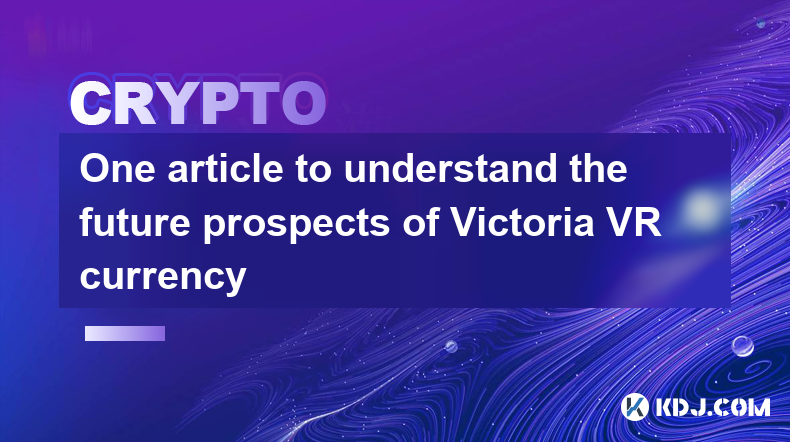-
 Bitcoin
Bitcoin $108,092.5658
-0.99% -
 Ethereum
Ethereum $2,546.4530
-1.12% -
 Tether USDt
Tether USDt $1.0000
0.01% -
 XRP
XRP $2.2676
0.12% -
 BNB
BNB $659.1616
-0.30% -
 Solana
Solana $148.8297
-1.97% -
 USDC
USDC $1.0000
0.02% -
 TRON
TRON $0.2874
-0.30% -
 Dogecoin
Dogecoin $0.1676
-3.64% -
 Cardano
Cardano $0.5765
-1.73% -
 Hyperliquid
Hyperliquid $37.2069
-6.18% -
 Bitcoin Cash
Bitcoin Cash $497.9918
-0.10% -
 Sui
Sui $2.8427
-2.26% -
 Chainlink
Chainlink $13.2689
-2.06% -
 UNUS SED LEO
UNUS SED LEO $9.0541
0.15% -
 Stellar
Stellar $0.2487
-0.92% -
 Avalanche
Avalanche $17.7710
-3.09% -
 Shiba Inu
Shiba Inu $0.0...01167
-1.28% -
 Toncoin
Toncoin $2.7488
-2.80% -
 Hedera
Hedera $0.1559
-2.28% -
 Litecoin
Litecoin $85.8945
-2.48% -
 Monero
Monero $316.0985
-2.09% -
 Dai
Dai $1.0001
0.02% -
 Polkadot
Polkadot $3.3481
-1.83% -
 Ethena USDe
Ethena USDe $1.0000
0.00% -
 Bitget Token
Bitget Token $4.2910
-3.04% -
 Uniswap
Uniswap $7.4131
-0.09% -
 Aave
Aave $280.9266
-2.67% -
 Pepe
Pepe $0.0...09816
-3.18% -
 Pi
Pi $0.4557
-2.29%
One article to understand the future prospects of Victoria VR currency
Dec 27, 2024 at 09:51 pm

Key Points:
- Introduction to Victoria VR (VR)
- Factors Driving VR's Growth
- Challenges Facing VR
- VR's Future Prospects
- FAQ on VR
Introduction to Victoria VR (VR)
Victoria VR (VR) is a native utility token and the driving force behind the Victoria VR platform, a blockchain-based virtual reality ecosystem. It allows users to create, explore, and monetize virtual worlds and experiences. VR's flexible architecture accommodates a wide range of applications, including gaming, education, social networking, and enterprise training.
Factors Driving VR's Growth
- Rising Demand for Immersive Experiences: The popularity of virtual and augmented reality (VR/AR) technologies is surging, driven by their ability to create highly immersive and engaging experiences. This demand is expected to continue to grow in the coming years.
- Technological Advancements: Rapid advancements in VR hardware and software are making it more accessible and affordable. The development of high-resolution headsets, low-latency networking, and advanced motion tracking technologies is further enhancing VR's capabilities.
- Expanding Use Cases: VR is finding applications in a widening array of industries, including healthcare, education, tourism, and retail. This versatility is contributing to its adoption by a wider user base.
- Growing Investment: Significant investment in VR technologies by venture capitalists, tech giants, and governments is supporting its development and commercialization. This investment is expected to accelerate VR's growth trajectory.
Challenges Facing VR
- Technical Limitations: While VR technology has made significant strides, technical challenges remain. These include issues with resolution, latency, field of view, and motion sickness. Ongoing research and development are addressing these limitations.
- Market Fragmentation: The VR ecosystem is fragmented, with multiple competing platforms and devices. This can hinder interoperability and user adoption. Standardization and collaboration among industry players are key to addressing this challenge.
- Lack of Compelling Content: VR requires high-quality and immersive content to drive user engagement. The creation of such content poses challenges, as it requires specialized skills and resources. Encouraging content creators and innovation is crucial to overcome this obstacle.
VR's Future Prospects
- Mass Adoption: VR is poised for mass adoption as technical limitations are overcome and prices become more affordable. It is expected to become as commonplace as smartphones and laptops in the future.
- Convergence with Other Technologies: VR is expected to converge with other technologies, such as 5G and cloud computing, to create even more immersive and interactive experiences. This convergence will open up new possibilities for VR applications.
- Enterprise and Professional Use: VR is increasingly being adopted by businesses for training, simulation, design, and collaboration purposes. It is expected to play a significant role in industries such as manufacturing, healthcare, and education.
FAQs on VR
Q: What are the use cases for VR beyond gaming?
A: VR finds applications in healthcare (e.g., surgery simulations), education (e.g., virtual field trips), social networking (e.g., virtual events), and enterprise (e.g., remote collaboration).
Q: How can VR benefit businesses?
A: VR can improve training, reduce costs, enhance collaboration, and create immersive marketing experiences.
Q: What are the barriers to VR's widespread adoption?
A: Technical limitations, market fragmentation, and lack of compelling content are key barriers.
Q: What is the potential market size for VR?
A: The global VR market is expected to reach trillions of dollars in the coming years, driven by growing demand across various industries.
Clause de non-responsabilité:info@kdj.com
Les informations fournies ne constituent pas des conseils commerciaux. kdj.com n’assume aucune responsabilité pour les investissements effectués sur la base des informations fournies dans cet article. Les crypto-monnaies sont très volatiles et il est fortement recommandé d’investir avec prudence après une recherche approfondie!
Si vous pensez que le contenu utilisé sur ce site Web porte atteinte à vos droits d’auteur, veuillez nous contacter immédiatement (info@kdj.com) et nous le supprimerons dans les plus brefs délais.
-
 ICNT Échangez maintenant
ICNT Échangez maintenant$0.3182
30.31%
-
 M Échangez maintenant
M Échangez maintenant$0.2011
23.43%
-
 SOLO Échangez maintenant
SOLO Échangez maintenant$0.3788
17.55%
-
 HSK Échangez maintenant
HSK Échangez maintenant$0.7010
17.49%
-
 SHX Échangez maintenant
SHX Échangez maintenant$0.0116
15.42%
-
 COREUM Échangez maintenant
COREUM Échangez maintenant$0.1392
8.59%
- Flashback IPO Coinbase (Coin): le rallye est-il surpris ou en train de commencer?
- 2025-07-08 22:50:12
- Trouble Toonie: repérer les contrefaçons comme un expert
- 2025-07-08 22:50:12
- Coins meme, investissement précoce, croissance parabolique: attraper la vague
- 2025-07-08 22:30:12
- Crypto, institutions, BTC & ETH: A New Era Dawns
- 2025-07-08 22:30:12
- Bitcoin Solaris Market Launch: A New Dawn or Just Another Altcoin?
- 2025-07-08 20:30:12
- Bitcoin, Memecoin Mania, and the All-Time High Hunt: What's Next?
- 2025-07-08 20:30:12
Connaissances connexes

How to customize USDT TRC20 mining fees? Flexible adjustment tutorial
Jun 13,2025 at 01:42am
<h3>Understanding USDT TRC20 Mining Fees</h3><p>Mining fees on the TRON (TRC20) network are essential for processing transactions. U...

USDT TRC20 transaction is stuck? Solution summary
Jun 14,2025 at 11:15pm
<h3>Understanding USDT TRC20 Transactions</h3><p>When users mention that a USDT TRC20 transaction is stuck, they typically refer to ...

How to cancel USDT TRC20 unconfirmed transactions? Operation guide
Jun 13,2025 at 11:01pm
<h3>Understanding USDT TRC20 Unconfirmed Transactions</h3><p>When dealing with USDT TRC20 transactions, it’s crucial to understand w...

How to check USDT TRC20 balance? Introduction to multiple query methods
Jun 21,2025 at 02:42am
<h3>Understanding USDT TRC20 and Its Importance</h3><p>USDT (Tether) is one of the most widely used stablecoins in the cryptocurrenc...

What to do if USDT TRC20 transfers are congested? Speed up trading skills
Jun 13,2025 at 09:56am
<h3>Understanding USDT TRC20 Transfer Congestion</h3><p>When transferring USDT TRC20, users may occasionally experience delays or co...

The relationship between USDT TRC20 and TRON chain: technical background analysis
Jun 12,2025 at 01:28pm
<h3>What is USDT TRC20?</h3><p>USDT TRC20 refers to the Tether (USDT) token issued on the TRON blockchain using the TRC-20 standard....

How to customize USDT TRC20 mining fees? Flexible adjustment tutorial
Jun 13,2025 at 01:42am
<h3>Understanding USDT TRC20 Mining Fees</h3><p>Mining fees on the TRON (TRC20) network are essential for processing transactions. U...

USDT TRC20 transaction is stuck? Solution summary
Jun 14,2025 at 11:15pm
<h3>Understanding USDT TRC20 Transactions</h3><p>When users mention that a USDT TRC20 transaction is stuck, they typically refer to ...

How to cancel USDT TRC20 unconfirmed transactions? Operation guide
Jun 13,2025 at 11:01pm
<h3>Understanding USDT TRC20 Unconfirmed Transactions</h3><p>When dealing with USDT TRC20 transactions, it’s crucial to understand w...

How to check USDT TRC20 balance? Introduction to multiple query methods
Jun 21,2025 at 02:42am
<h3>Understanding USDT TRC20 and Its Importance</h3><p>USDT (Tether) is one of the most widely used stablecoins in the cryptocurrenc...

What to do if USDT TRC20 transfers are congested? Speed up trading skills
Jun 13,2025 at 09:56am
<h3>Understanding USDT TRC20 Transfer Congestion</h3><p>When transferring USDT TRC20, users may occasionally experience delays or co...

The relationship between USDT TRC20 and TRON chain: technical background analysis
Jun 12,2025 at 01:28pm
<h3>What is USDT TRC20?</h3><p>USDT TRC20 refers to the Tether (USDT) token issued on the TRON blockchain using the TRC-20 standard....
Voir tous les articles

























































































